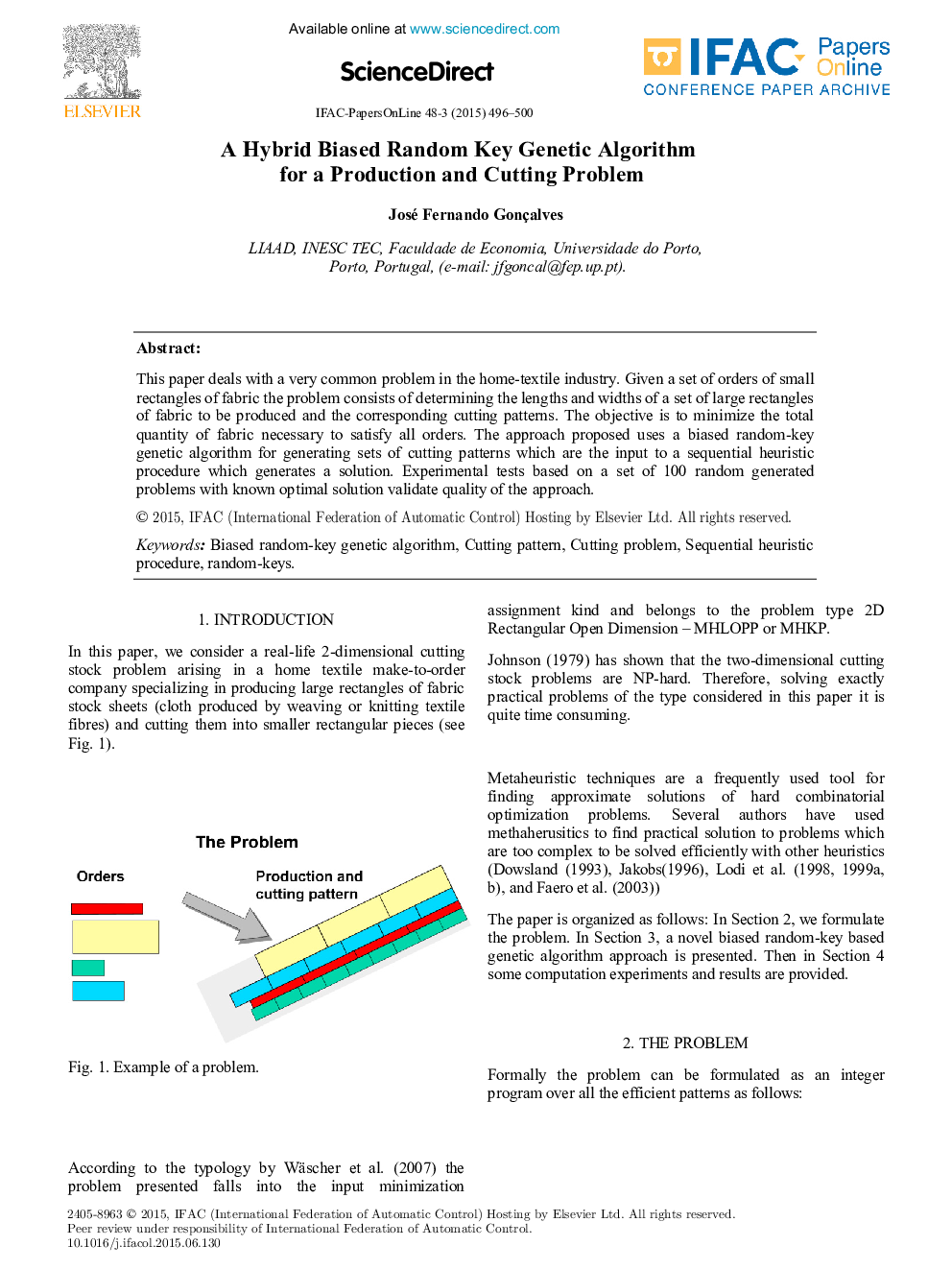| Article ID | Journal | Published Year | Pages | File Type |
|---|---|---|---|---|
| 711957 | IFAC-PapersOnLine | 2015 | 5 Pages |
Abstract
This paper deals with a very common problem in the home-textile industry. Given a set of orders of small rectangles of fabric the problem consists of determining the lengths and widths of a set of large rectangles of fabric to be produced and the corresponding cutting patterns. The objective is to minimize the total quantity of fabric necessary to satisfy all orders. The approach proposed uses a biased random-key genetic algorithm for generating sets of cutting patterns which are the input to a sequential heuristic procedure which generates a solution. Experimental tests based on a set of 100 random generated problems with known optimal solution validate quality of the approach.
Related Topics
Physical Sciences and Engineering
Engineering
Computational Mechanics
